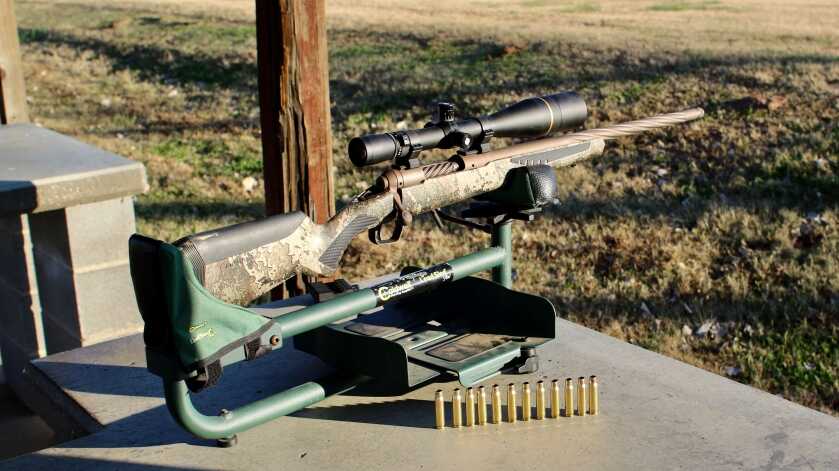
Back in November, Savage announced the creation of their Backcountry Xtreme Series (BXS). The guns in this new class are all tricked-out 110s. If you’re looking for improved finishes, serious weight reduction, threaded muzzles—any of the extras that really make the 110 shine—the Backcountry Xtreme guns are a good place to start.
Even though it was first announced in 2019, the 110 High Country has been given BXS status. And for good reason. From the outside, the distinctions are readily apparent. The 110 HC is dressed up in TrueTimber Strata. This is a mottled pattern that is exceptionally versatile. It is as at home in the high desert as it is in the piney woods.
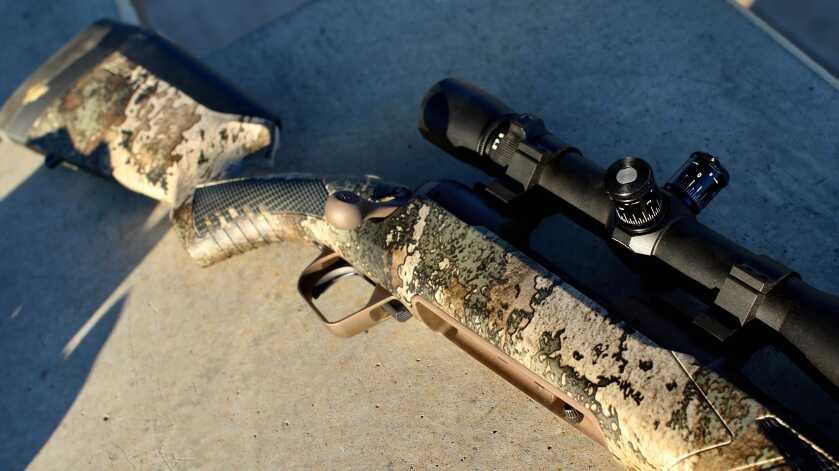
The stock itself is synthetic. It has some over-molded surfaces that give it a bit of extra grip, even when it is a bit wet. At the front and back of the stock are a set of traditional sling studs. There’s nothing pretentious about the set-up, just the straightforward functionality of material composition, surfaces, and design.
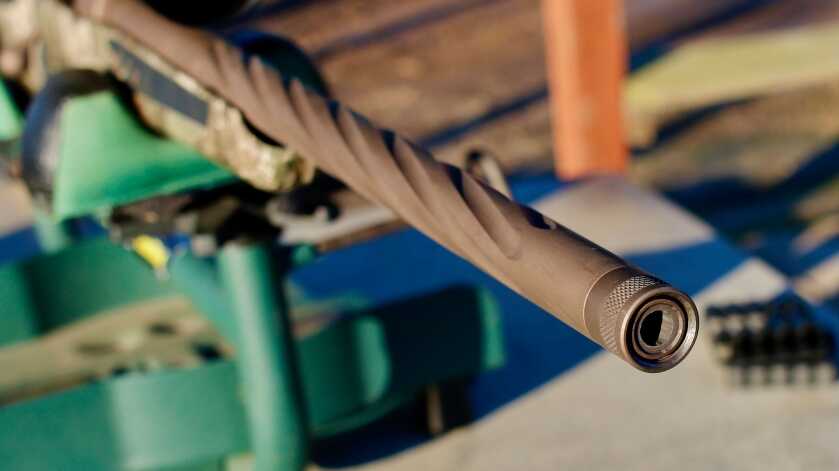
The barrel and receiver have been sprayed with coyote brown ceramic physical vapor deposition (PVD). This PVD coating is exceptionally protective and can stand up to both heat and excessive wear. Savage says the coating is 2-4 microns thick. It looks sharp, too.
The High Country has some other functional/aesthetic enhancements. The barrel is fluted in a dramatic spiral that runs most of its length. Savage button-rifles their barrels. The .308 High Country’s barrel is 22 inches. The long-action calibers have 24-inch barrels.
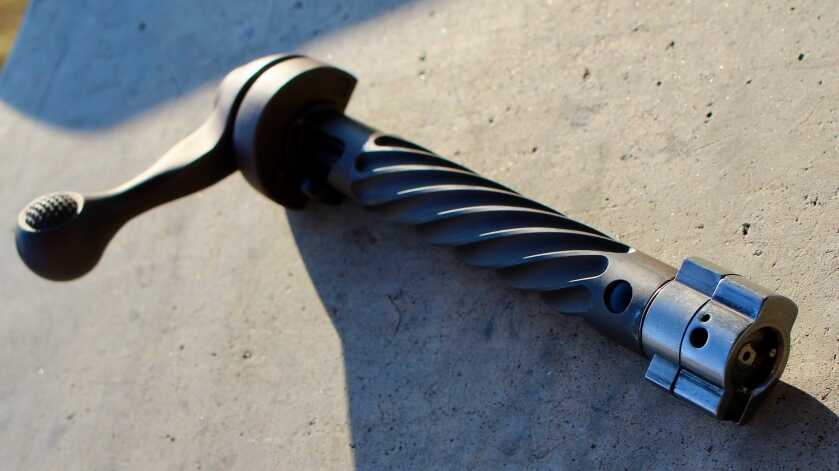
The bolt, too, has been fluted. This cuts some weight, of course, but also increases the surface area on both. On the barrel, this helps in heat dispersion. And it looks good, too.
Other elements of the 110 HC are increasingly common in the 110 line. The muzzle is threaded. This one is in .308 and is simply capped, but the long-action versions come with a muzzle brake. The .308’s barrel has a 1 in 10” right hand twist. With the threading, this is an ideal platform to silence, though you could put a brake on it, too.
The receiver itself is stainless, though you wouldn’t know it under the PVD coating. The barrel, too, is stainless. The HC has a factory blueprinted action and a floating bolt head. Both contribute greatly to the gun’s inherent accuracy.
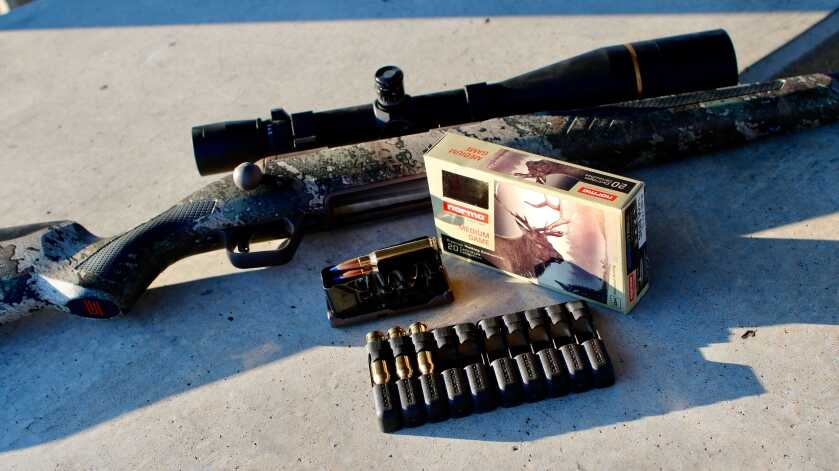
Like most of the 110s, this one feeds from a flush-fit detachable box magazine. These are reliable mags. I’ve never had feeding issues with any of them, though capacity is meager. That’s hardly a concern with a rifle known for one-shot-stops, but I’ve grown accustomed to the ACIS mags in .308.
Fans of Savage will already be familiar with the other standard design elements. A couple of them require a bit of clarification. The camo stock on the 110 HC is user-adjustable. This is the AccuFit system and it lets you add to length-of-pull and cheek riser height. AccuFit makes these 110s really adaptable. You can pick anything between 12.75 and 13.75 inches of LOP. While that doesn’t seem like a lot, it can make a big difference.
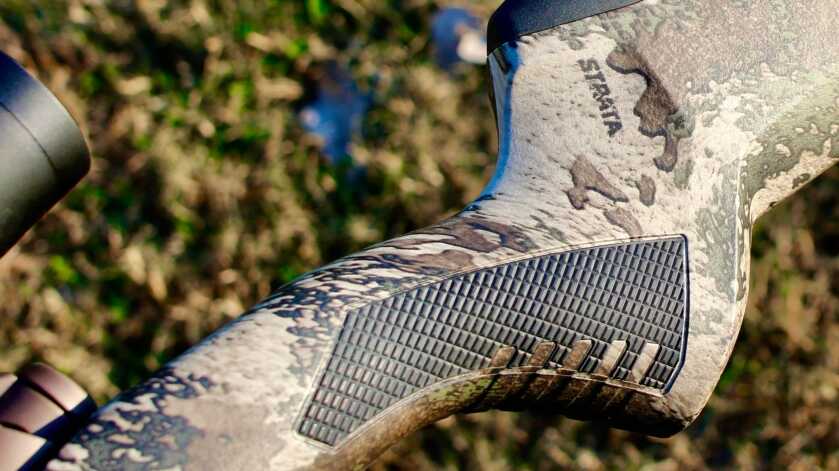
Another solid feature is AccuFit. That’s Savage’s name for their bedding process. Inside the stock, along the whole length of the action, is an aluminum bed that keeps everything true. The combination of AccuFit and AccuStock makes the 110 stock one of the best factory stocks on the market.
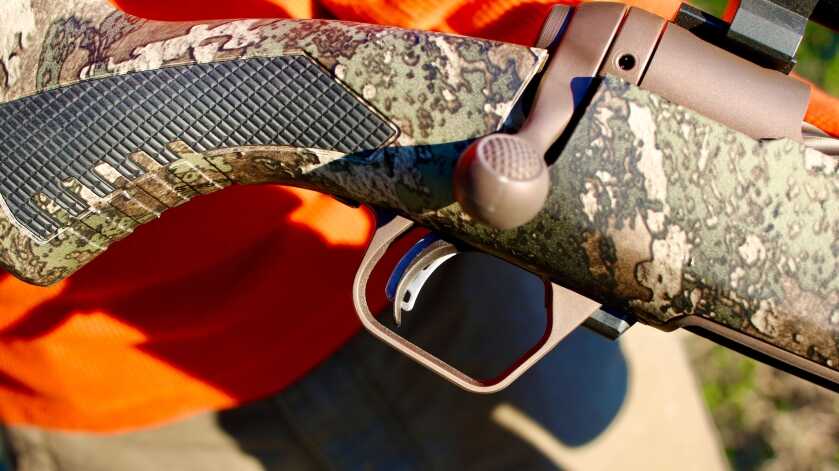
The other feature is AccuTrigger. Like other aspects of the set-up, the trigger can be adjusted to meet a range of needs. For those who stalk hunt and carry their rifles through the brush, higher weights may make sense. The top end of AccuTrigger comes in at 4.5 pounds. The bottom end, for those who like a light trigger, is just 2.5 pounds. The pull itself is crisp. The trigger bar in the trigger shoe moves fluidly and the break is clean.
Carrying the High Country
Part of the premise of this rifle is that the weight reduction makes it easier to carry, especially in high country. Empty, and naked, the 110 HC comes in at 8.1 pounds. That’s lighter than most of the other .308 110s. The 110 Ultralite shaves another two pounds off with its carbon fiber-wrapped barrel and even more aggressive weight reduction, but 8.1 pounds is a manageable weight. With a scope on top and a full magazine and a sling, it will still come in under 10 pounds.
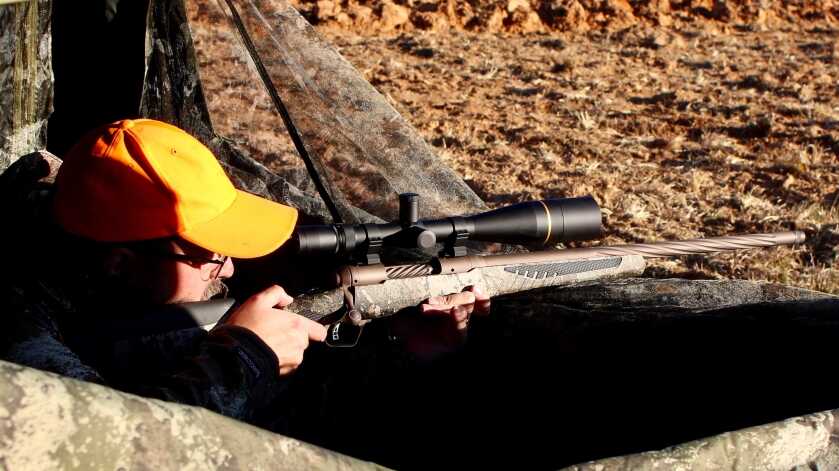
Shooting the 110 HC
As I get older, I tend to grouse more about the weight of rifles I have to carry any distance. But I never complain about the weight when I’m shooting it. .308 doesn’t produce punishing recoil, even in lighter rifles. The rubber buttpad on the buttstock eats up a bit of the bite, too.
The gun comes in the typical caliber selections: .243, .270, .280 Ackley Improved, .30-06, .300 Win Mag, .300 WSM, 6.5 Creedmoor, 6.5 PRC, 7mm Rem Mag, and 7mm-08 Rem. I grew up shooting .30-06, and I live in the sticks—where .30-06 is still one of the most popular calibers. But this is a review gun. .308 has its advantages, too. There’s a ton of available ammo, even now. There may be a wider selection in .308 than in any of the other .30 caliber chamberings.
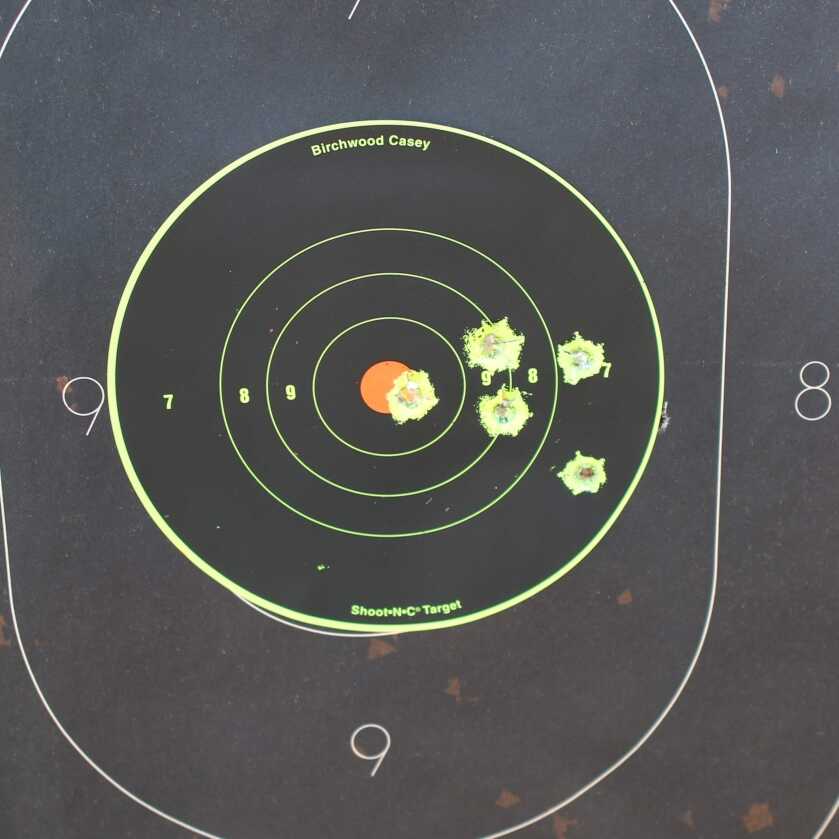
I ran a handful of brands through the High Country before I settled on Norma’s Bondstrike. As it is whitetail season, I wanted something with dependable accuracy and good expansion, and Bonstrike is designed to expand reliably and stay intact, even at close distances. I’ve not had a chance to test this on a whitetail yet, but there’s still a couple of weeks left in the season.
The 110 High Country is drilled and tapped. Check your 110’s design before investing in bases. There are a couple of versions. This one has two rounded mount surfaces.
I topped the High Country with a Leupold VX-3i 6.5-20x50mm Side Focus CDS Target, Leupold rings and Leupold bases. The VX-31 is a beast of a scope, and one that would allow me to stretch out the 110 way past any of the available distances in the western Arkansas woods where I hunt. For a solid baseline, I zeroed the scope at 100 yards.
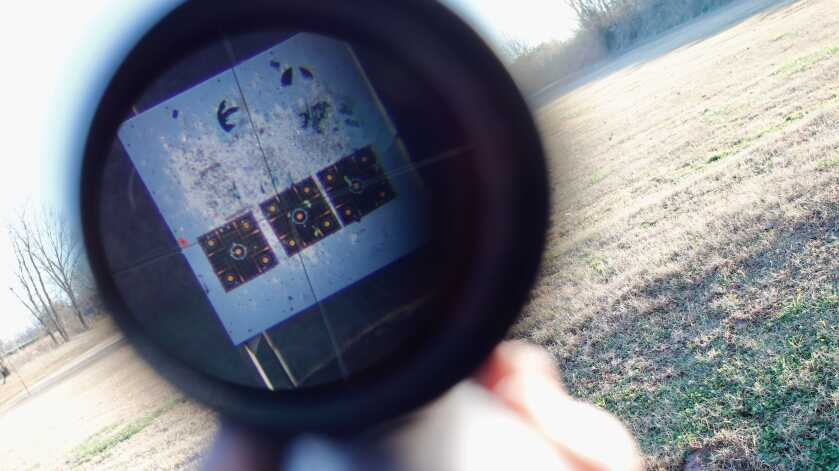
Accuracy is exactly what you’d expect from Savage. That’s not a sentence I type lightly. The Model 110 has been in production longer than any other bolt-action rifle. Savage has been refining the design for six decades. It works incredibly well.
With the Bondstrike, I was able to put down sub-moa groups at 100. At 300, I’m still well within the window. That’s the max at my local range. With a solid piece of glass up top, the High Country is only really limited by its ammo.
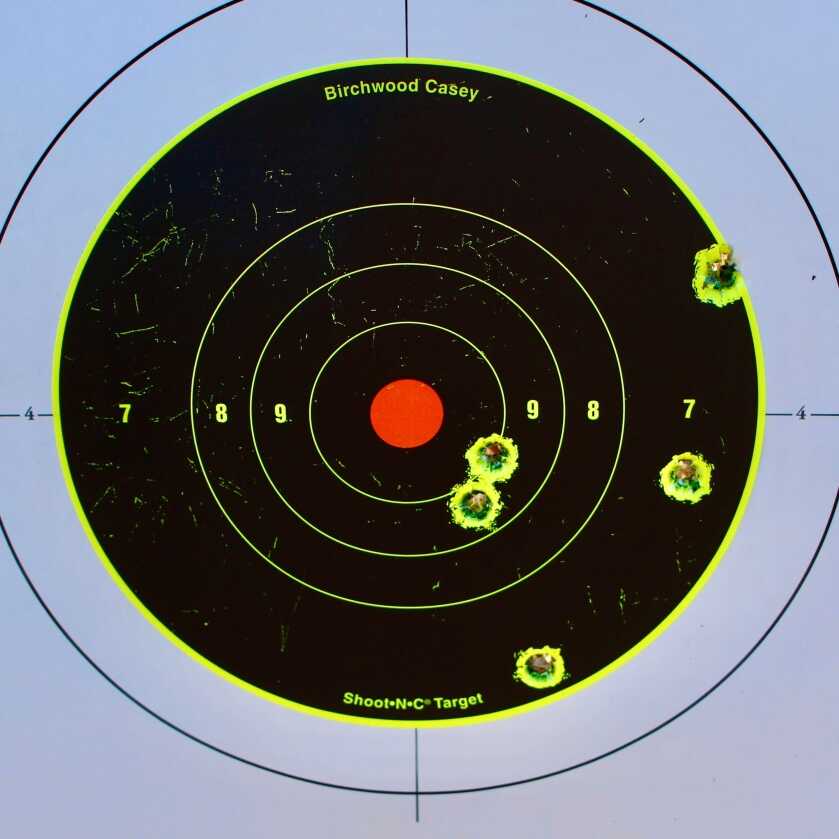
I’ve yet to shoot a 110 that wasn’t a solid rifle. The new guns of the Backcountry Xtreme Series takes that design to another level. With its synthetic stock and stainless PVD coated barrel and receiver, the High Country is built for hard use.
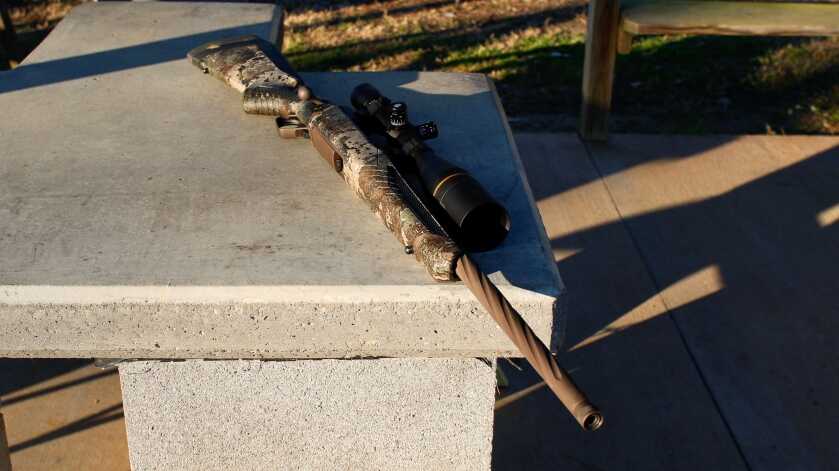
MSRP on the High Country is $1,129. If you look at this as a bog-standard 110, that may seem high. But it isn’t. This gun makes a statement. There not a corner of the rifle that hasn’t been intentionally designed to take whatever abuse you can throw at it. And if you’re like me, that means this is a gun you’ll pass on to the next generation and it will likely serve them just as well as it served you.


I’m a stone lefty….Is this firearm, the 110 High Country, offered in a left handed action.
If it is, one in 30/06 caliber will be under the tree this Christmas!!!
Get out of MA,bring back the: 99F in stainless/synthetic with decent trigger in 308Win or 45/70,Savage 24 F 30-06/12ga stainless/ synthetic with decent iron sights/trigger
Wow – shooting standards, like product quality in most cases, are really slipping. A 4” group at 200 yards is a decent group? My BS meter tells me the possibility that the author shot MOA groups at 100 yards is a fantasy. Pity the poor deer that the author takes a potshot at – most likely winds up feeding the coyotes. Just another pimped up Savage and “gun writer”.
in reference the “110 high country” ! how many rounds ? 2 price for 308 300 mag 300 how about 338 ? where to see same…
Where can I find dis gun
“The fluted barrel helps with heat dispersion.”
Heat dispersion…!..? is that really a concern for a bolt action hunting rifle that will likely see less than a 20rd box run down the barrel in an entire year much less in a single outing..?
Shooting competition @ a range in which multiple rounds are fired in a prescribed time limit can raise heat up concerns but not likely in a hunting situation . if you miss your prey on the initial shot it is highly unlikely you will nail him on the fly and I am pretty there will be ample time for cool down till you get another opportunity for a kill.
I am sure it is a fine gun but I personally believe that bolt and barrel fluting really only serve (2) purposes in civilian weaponry …weight reduction to a limited extent, and “cool looks”.
Every manufacturer is striving to gain attention and aesthetics and “cool names” , along with the model number , seems to be standard operation procedure now-a-days.
While I find it irksome , I also see the necessity to capture a sale so you can make some money. I guess I am more annoyed by the mentality of the purchaser than the marketing of the manufacturer…but being cynical comes with age..so the problem really lies within my personal bias.
Bottom line..I like to complain.(;>)
I am so glad someone else commented on the heat dispersion. If this truly helped with that or weight you would see in on the AR’s and in use with the military. My B.S. meter was screaming. It is about the look, unfortunately. I think it looks really stupid.
They were “selling a story” and you didn’t buy it. Having your BS goggles on sure helps when on the internet!
I have a couple Savage rifles and they shoot very well, I’m a fan and would recommend them. This version of the 110 has great features and is arguably priced very well for what one could expect for an off then shelf rifle that is dressed up as the High Country. I’m a Pennsylvanian so I wouldn’t likely have the need for the accuracy standards of long range shooting of western state hunters but still appreciate nice tight groups at the range that my other Savage rifles deliver on a regular basis. However, Pennsylvanians do get to climb mountains. Couple that with the fact that I have aged up into my sixties and I can now appreciate the aspect of a light weight rifle, which this is arguably not bad, but not really “light weight” either, at least not by modern light weight standards. If this rifle shoots as well as my other Savages, it’s a winner. I trust Savage purpose built the HC to deliver the features a mountain rifle requires and I’m going to the store to take a closer look.